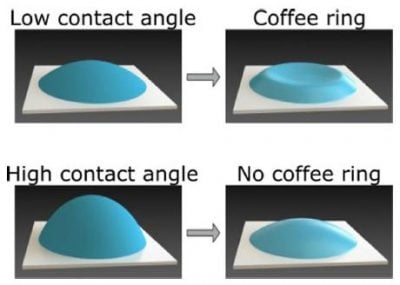Professor Gil Garnier, Director of BioPRIA (Bioresource Processing Research Institute of Australia) in the Department of Chemical Engineering at Monash University, led an international team to explore how patterns formed from evaporating droplets – a phenomenon that has mystified physicists for years.
Professor Garnier said this discovery, created by Dr. Michael Hertaeg from BioPRIA, could open up doors in the blood diagnostics arena, especially for the discovery of treatments for anemia and other blood diseases.
A new study has discovered the mystery behind ‘coffee rings’ and how it could advance research in blood diagnostics. Credit: Monash University
Pattern formation is a common occurrence in drying colloidal liquids, such as milk, coffee, paint, aerosols, and blood.
Most common in droplets is a ring distribution where the liquid particles have relocated to the edge, which is referred to as a coffee ring, when drying. This deposit is unfavorable in many manufacturing processes and is of fundamental interest experts in the building, medical, and engineering professions.
They concluded that the contact angles at which a droplet is placed on a wetted surface determines the prevalence of coffee angles. When the droplet is placed at a high contact angle, no coffee rings are present.
“Our research identified the contact angle formed by the suspension of droplets on the surface and its solids content as the two important governing variables to coffee ring formation,” Professor Garnier said.
“Although successful modeling has been achieved previously, we show here for the first time that for each contact angle, there is a critical initial colloid volume fraction over which no ring-like pattern will be formed.
“Essentially, the lower the contact angle, the higher likelihood that ring profiles will be found.”
When a droplet is placed on a surface, it quickly reaches an apparent equilibrium position that can, for small droplets, be defined solely by contact angle and radius. READ MORE



No comments:
Post a Comment